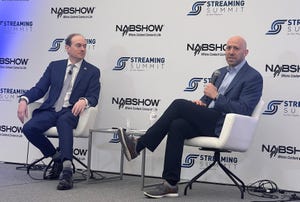Sprint and T-Mobile's coverage overlaps, while the spectrum doesn't, meaning there will be a lot of work to do if the acquisition does go through.

Sprint's reported $32 billion bid to acquire T-Mobile is about a lot of things -- more customers, scale, and resources to build out its network among them. But, like all the wireless mergers of the past year, it's also about spectrum. (See Sprint, T-Mobile Settle on $32B Price.)
Spectrum has been the stated catalyst for most of the big US wireless mergers, including AT&T Inc. (NYSE: T)'s purchase of Leap Wireless and its own attempted T-Mobile US Inc. buy, and T-Mobile's acquisition of MetroPCS. Only with Sprint Corp. (NYSE: S) and T-Mobile, the spectrum -- and coverage -- story is a bit complicated. (See FCC Green-Lights AT&T's Leap Buy, T-Mobile Doubles MetroPCS Coverage, AT&T Wants to Buy Sprint's WCS Spectrum, T-Mobile Spends $2.4B on Verizon Spectrum, and US Spectrum Outlook: Smooth Not Crunchy?)
For one thing, Sprint operates a 3G CDMA network and T-Mobile is GSM. Both are building out LTE networks, but are also using some different swatches of spectrum here. They both stand to gain up to 30MHz of 600MHz broadcast TV spectrum that the Federal Communications Commission (FCC) is setting aside for smaller carriers in an auction next year. However, they would likely lose this privilege if the merger goes through.
What they do have in common is most of their coverage to date has been in major cities, not rural areas. That won't change simply by the two companies merging. What will help, independent of the merger, is a deal Sprint inked with the Competitive Carriers Association and the NetAmerica Alliance LLC that would see it form reciprocal roaming agreements with rural carriers and even help fund their LTE deployments.
T-Mobile, also a CCA member, is not yet part of the agreement. But, in a bid to win merger approval, that is a likely next step. (See Sprint Joins Forces With Rural America on LTE, Rural Carriers: SoftBank Will Fund Your LTE, and Leading Lights Finalists 2014: Best Deal Maker.)
To get a better feel for the third- and fourth-largest US carriers' coverage and spectrum positions, coverage map maker Mosaik Solutions LLC has developed the following helpful images depicting Sprint and T-Mobile's overlap in coverage and spectrum.
Figure 1: Sprint & T-Mobile Coverage Overlap  Source: Mosaik Solutions
Source: Mosaik Solutions
Figure 2: Sprint & T-Mobile's Aggregate Spectrum  Source: Mosaik Solutions
Source: Mosaik Solutions
It is clear from the maps that this acquisition isn't about a bigger footprint out of the gate. The two would have a lot of integration work to do, and the most likely result would be the shuttering of one of the two 3G networks.
The acquisition will still have to pass regulatory muster, which many agree will be a formidable challenge. If it does, significant divestitures from Sprint will likely be required to make it palatable, which could end up changing the make-up of these maps even more. (See DT Asks for $1B Prenup for Sprint, T-Mobile — WSJ and Is SoftBank Ready to Reunite With Legere?)
— Sarah Reedy, Senior Editor, Light Reading
About the Author(s)
You May Also Like










